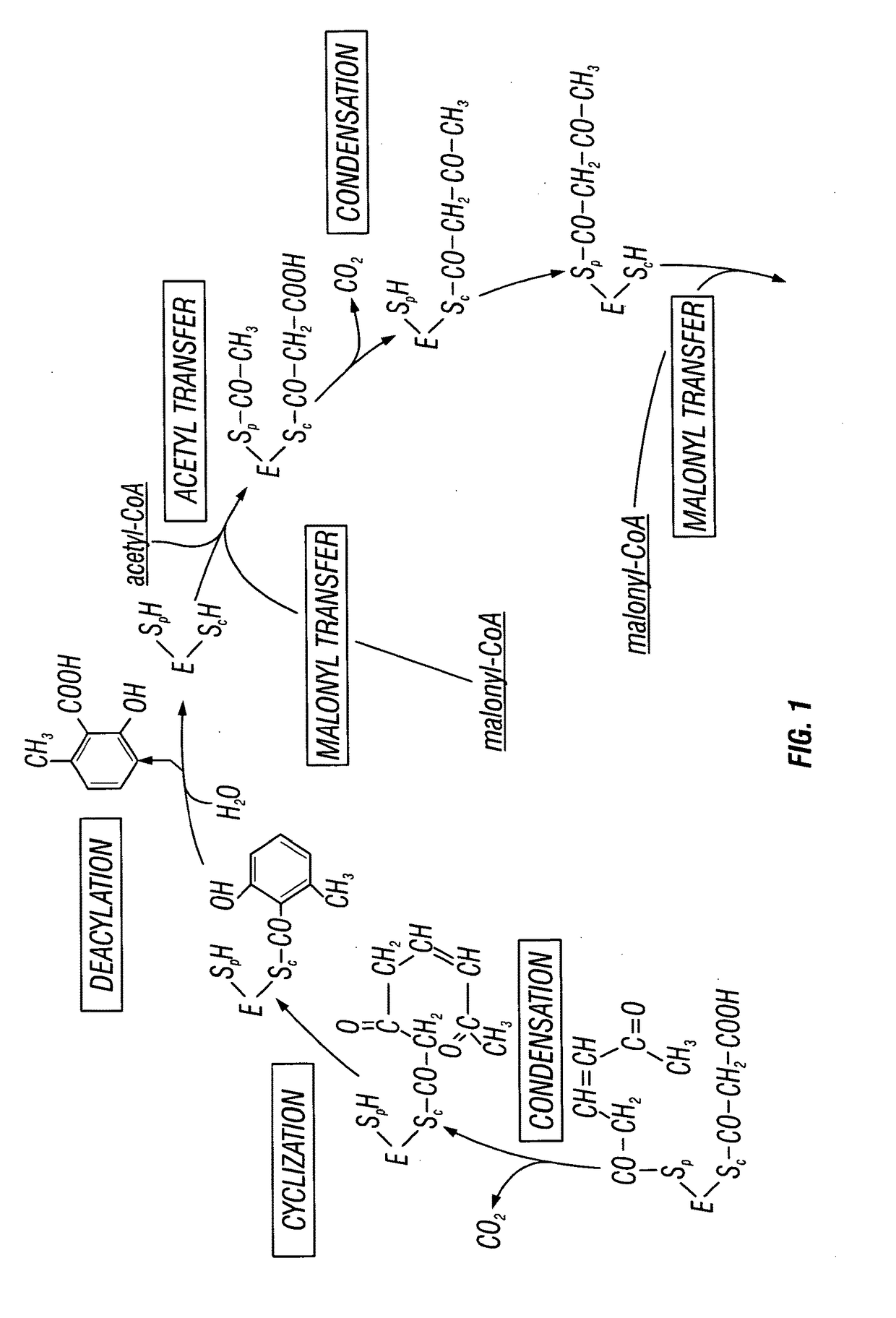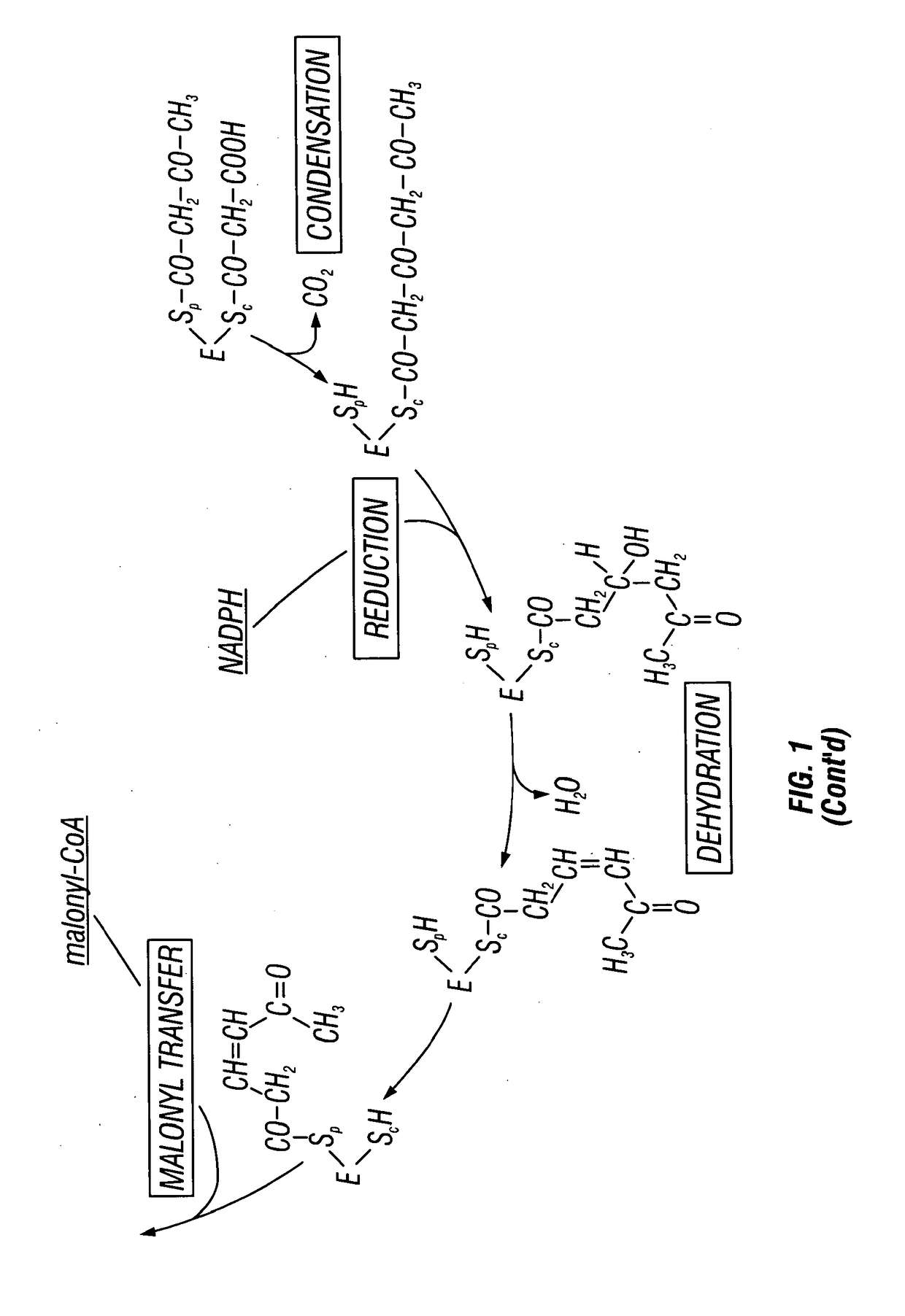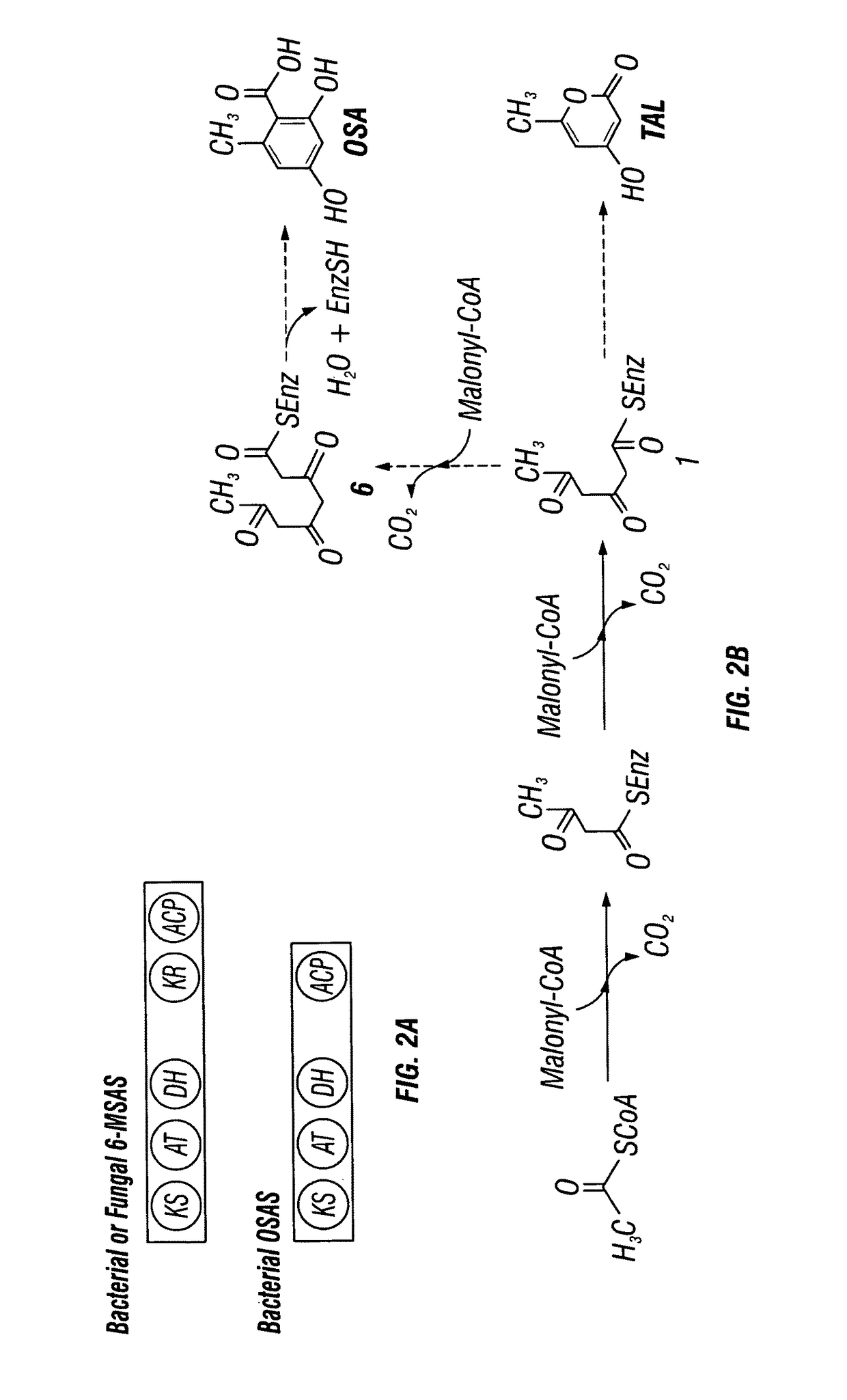Recombinant production systems for aromatic molecules
a production system and aromatic molecule technology, applied in the field of aromatic molecule production, can solve the problems of not being able to meet the needs of many specialty chemicals, not able to solve global problems, etc., and achieve the effect of facilitating the ability for further in vivo transformation and allowing more flexibility in design
- Summary
- Abstract
- Description
- Claims
- Application Information
AI Technical Summary
Benefits of technology
Problems solved by technology
Method used
Image
Examples
example 1
Expression of 6-MSAS and OSAS in Saccharomyces cerevisiae
[0184]Conversion of the polyketide products to m-cresol and orcinol. The S. cerevisiae ADH2 promoter is chemically synthesized and fused to synthetic genes for the bacterial 6-MSAS gene ChlB1 from Streptomyces antibioticus or the OSAS, AviM gene from Streptomyces viridochromogenes. A S. cerevisiae terminator sequence is also fused to the gene sequence, immediately subsequent to the stop codon(s) of each respective PKS gene. The expression cassette was cloned into a yeast expression vector containing the URA3 selectable marker. Similarly, a gene encoding the A. nidulans npgA protein is cloned into a yeast expression vector containing the selectable marker for growth in tryptophan-deficient media.
[0185]Competent Saccharomyces cerevisiae InvSc1 (MATa his3D1 leu2 trp1-289 ura3-52) (Invitrogen) is transformed sequentially with the expression vectors and then plated on minimal agar plates (1.7 g / L yeast nitrogen base without amino ...
example 2
Production of m-Cresol Directly in S. cerevisiae
[0191]A yeast strain is constructed wherein the A. nidulans npgA gene is integrated into the genome of yeast strain BJ2168 (obtained from the ATCC) by standard methods to create strain Rho100-npgA. Plasmids containing expression systems for the ChB1 gene under the selection of Ura3, and for the expression of the P. patulum 6-MSA decarboxylase, or the 6-MSA decarboxylase PatG from A. clavatus, under selection control through Trp1, are sequentially transformed into Rho100-npgA.
[0192]The transformed yeast cells are grown in shake flasks containing YEPD media with 2% glucose for 48 and 72 hours, and the supernatants analyzed for the production of m-cresol. Cells are removed by centrifugation, and m-cresol extracted from the media using ethyl acetate for further analysis, quantitation and distillation to high purity.
[0193]In a further series of experiments, the two genes are expressed on the same vector using S. cerevisiae IRES sequences s...
example 3
Production of Orcinol Directly in S. cerevisiae
[0194]Plasmids containing expression systems for the OSAS AviM gene from Streptomyces viridochromogenes under the selection of Ura3, and for the expression of the PatG decarboxylase from Aspergillus clavatus under selection control through Trp1, are sequentially transformed into Rho100-npgA.
[0195]The transformed yeast cells are grown in shake flasks containing YEPD media with 2% glucose for 48 and 72 hours, and the supernatants analyzed for the production of orcinol. Cells are removed by centrifugation, and orcinol extracted from the media using ethyl acetate for further analysis, quantitation and distillation to high purity.
[0196]In a further series of experiments, the two genes are expressed on the same vector using S. cerevisiae IRES sequences separating the two genes, expressed from a single promoter. IRES sequences are compared with respect to their abilities to produce orcinol from their respective expression systems.
PUM
| Property | Measurement | Unit |
|---|---|---|
| density | aaaaa | aaaaa |
| catalytic | aaaaa | aaaaa |
| hydrophobic | aaaaa | aaaaa |
Abstract
Description
Claims
Application Information
 Login to View More
Login to View More - R&D
- Intellectual Property
- Life Sciences
- Materials
- Tech Scout
- Unparalleled Data Quality
- Higher Quality Content
- 60% Fewer Hallucinations
Browse by: Latest US Patents, China's latest patents, Technical Efficacy Thesaurus, Application Domain, Technology Topic, Popular Technical Reports.
© 2025 PatSnap. All rights reserved.Legal|Privacy policy|Modern Slavery Act Transparency Statement|Sitemap|About US| Contact US: help@patsnap.com



